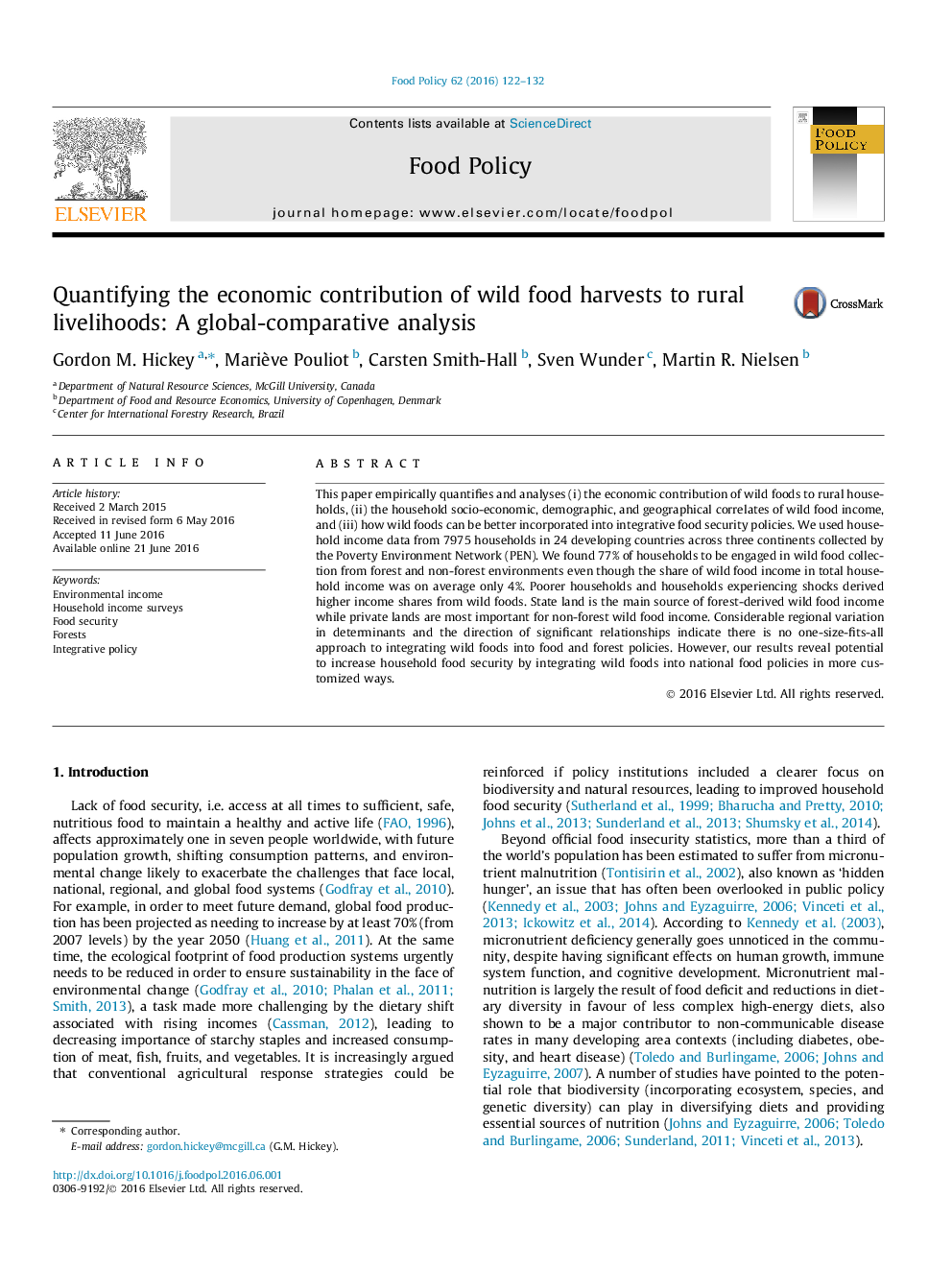| کد مقاله | کد نشریه | سال انتشار | مقاله انگلیسی | نسخه تمام متن |
|---|---|---|---|---|
| 5070140 | 1477014 | 2016 | 11 صفحه PDF | دانلود رایگان |
- Comparative empirical evidence on the role of wild foods in supporting livelihoods.
- Data set includes 24 countries, 58 sites, 333 villages, and 7975 households.
- 77.3% of households harvested wild foods from forest or non-forest environments.
- 461 wild foods were reported, more than twice the number of cultivated foods.
- Wild foods fill strategic niches in rural households' multiple nutritional needs.
This paper empirically quantifies and analyses (i) the economic contribution of wild foods to rural households, (ii) the household socio-economic, demographic, and geographical correlates of wild food income, and (iii) how wild foods can be better incorporated into integrative food security policies. We used household income data from 7975 households in 24 developing countries across three continents collected by the Poverty Environment Network (PEN). We found 77% of households to be engaged in wild food collection from forest and non-forest environments even though the share of wild food income in total household income was on average only 4%. Poorer households and households experiencing shocks derived higher income shares from wild foods. State land is the main source of forest-derived wild food income while private lands are most important for non-forest wild food income. Considerable regional variation in determinants and the direction of significant relationships indicate there is no one-size-fits-all approach to integrating wild foods into food and forest policies. However, our results reveal potential to increase household food security by integrating wild foods into national food policies in more customized ways.
Journal: Food Policy - Volume 62, July 2016, Pages 122-132
